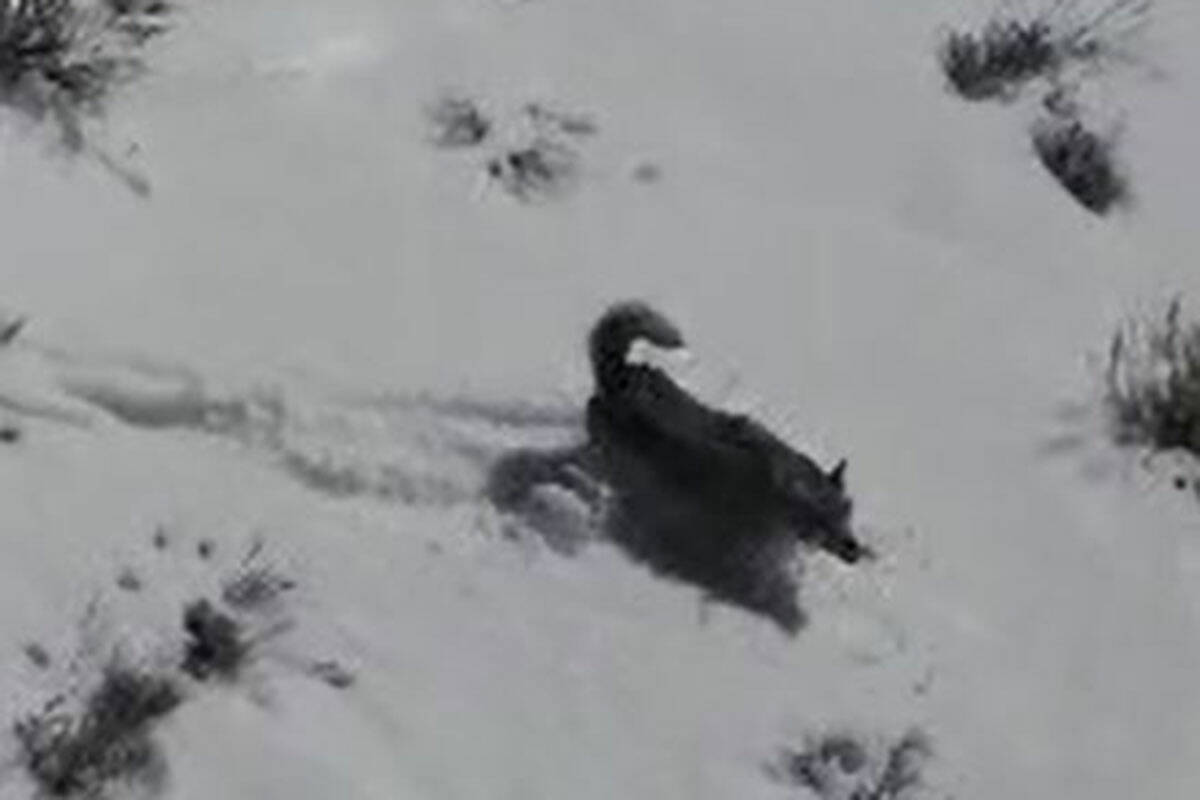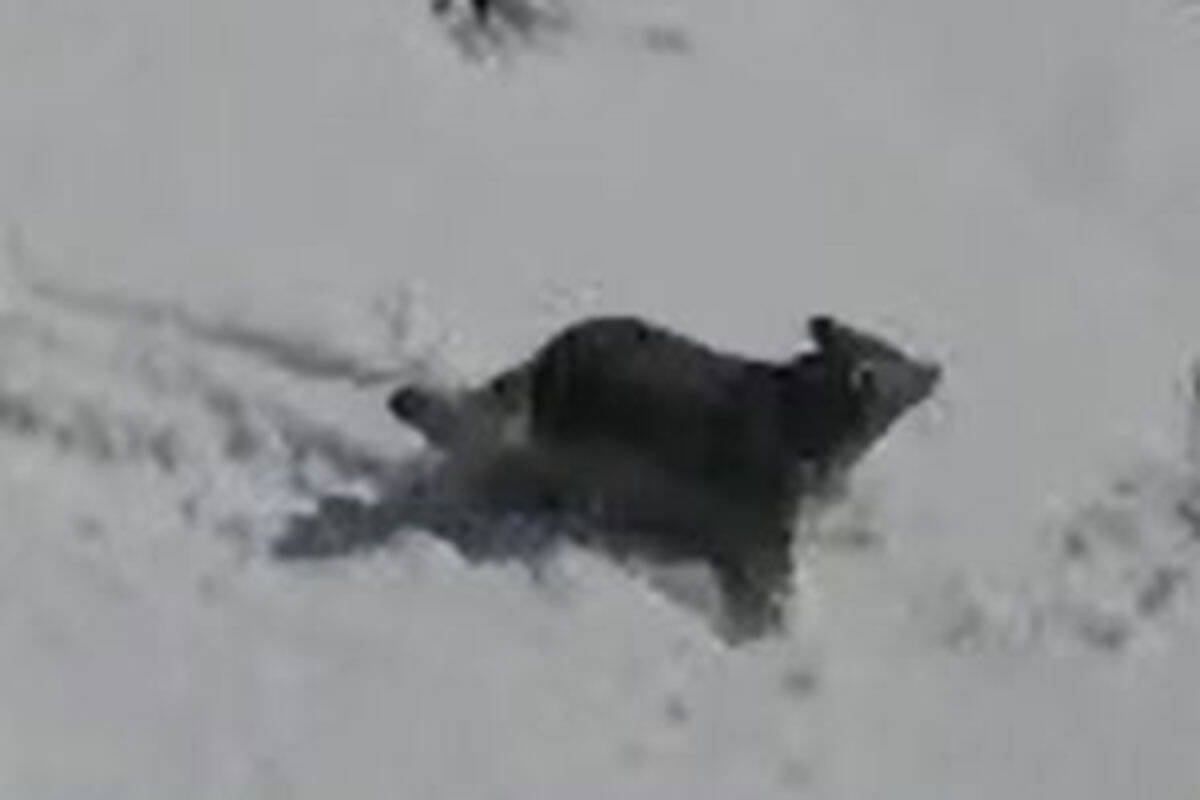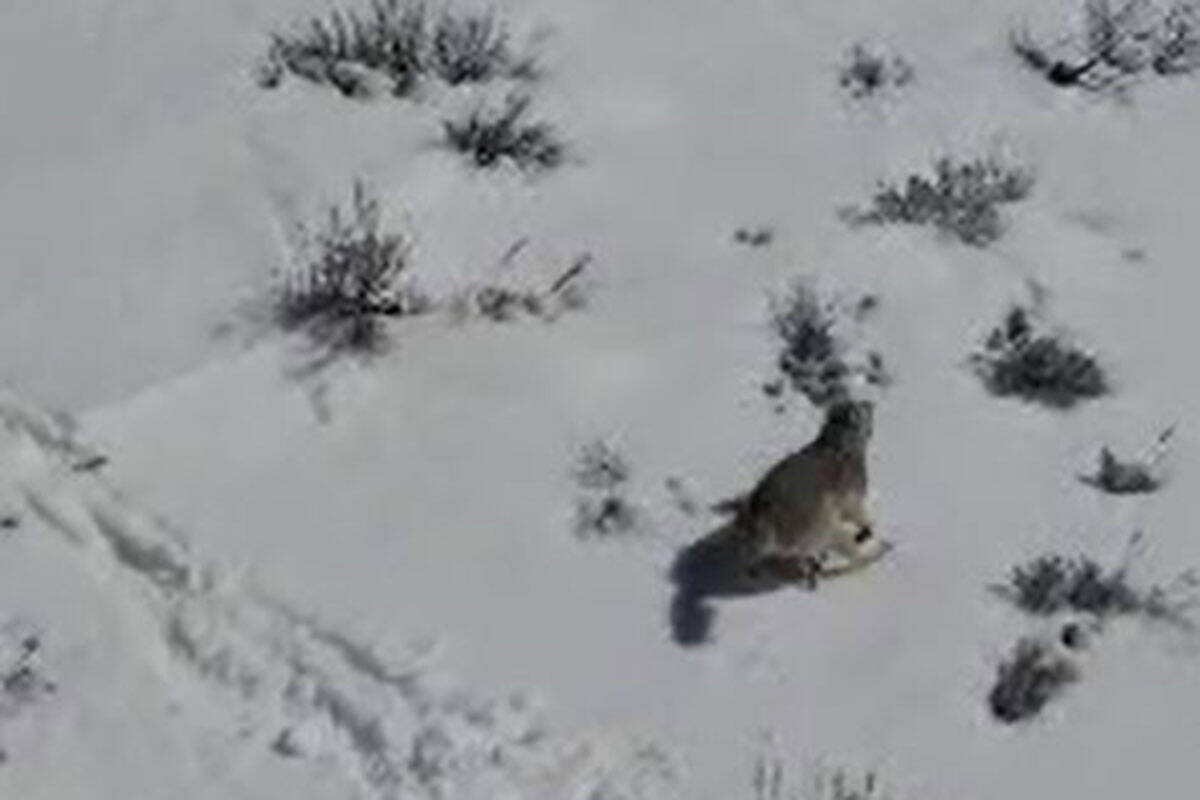Officials may have spotted 3 endangered wolves in Nevada
The blurry photos taken from a helicopter could be coyotes or another type of dog.
But based on their tracks in the snow, the animals wildlife officials saw this month could signal the return of the endangered, once-plentiful gray wolf to Nevada. While taking inventory of the state’s newfound moose population, the officials saw a rogue band of three animals on Merritt Mountain in Elko County on March 17.
They aren’t entirely sure about the gray wolf ID, though, and have sent hair and feces samples off to two DNA labs to confirm. But because of backlogs, that could take up to three months, said Ashley Zeme, a Nevada Department of Wildlife spokeswoman.
“We need that confirmation in order to know more about these animals,” Zeme said. “Right now, our No. 1 goal is confirming that these are wolves.”
If they do turn out to be wolves and stick around within state borders, Zeme said the department will work with the U.S. Fish and Wildlife Service to develop a plan to protect the new population.
Wolf numbers down nationwide
In a statement, state wildlife department Director Alan Jenne noted that Nevada is “not a historic habitat” for the species. Before 2017, nobody had seen a gray wolf in Nevada since 1922.
That’s partially because wolf populations have never come close to original numbers, which the Center for Biological Diversity estimates could have neared 2 million across North America when settlers arrived.
Wolves also disappeared from California in the 1920s, but today they are somewhat common. The California Department of Fish and Wildlife believes there are a minimum of 44 known to roam the state.
No national effort had been coordinated to restore wolf populations until a 2022 lawsuit from the center ended with the U.S. Fish and Wildlife Service agreeing to develop a nationwide plan by Dec. 12, 2025.
Amaroq Weiss, a senior wolf specialist at the center, said people and wolves can coexist, especially with advanced techniques to protect farm animals.
Under the Endangered Species Act meant to use federal resources to protect plants and wildlife, the gray wolf species was listed as endangered in 1974. As few as 600 of them were still around in the contiguous U.S. back then, Weiss said.
Seeing wolves in Nevada again represents a major homecoming, Weiss said, though conservationists understand that restoring wolves to their original numbers isn’t realistic.
“We’re never going to see that, we don’t expect it, and we’re not asking for that,” Weiss said. “What we are asking for is a reasonable attempt.”
Protecting the wolves that are still around is critical to biodiversity, she said.
Contact Alan at ahalaly@reviewjournal.com. Follow @AlanHalaly on X.
























